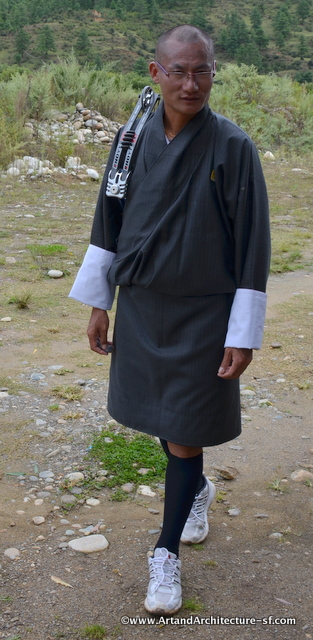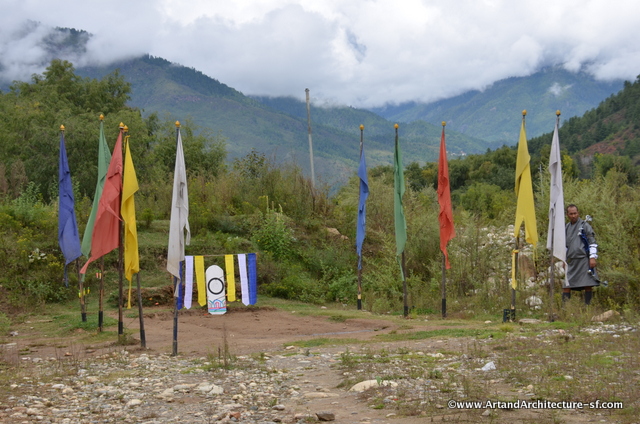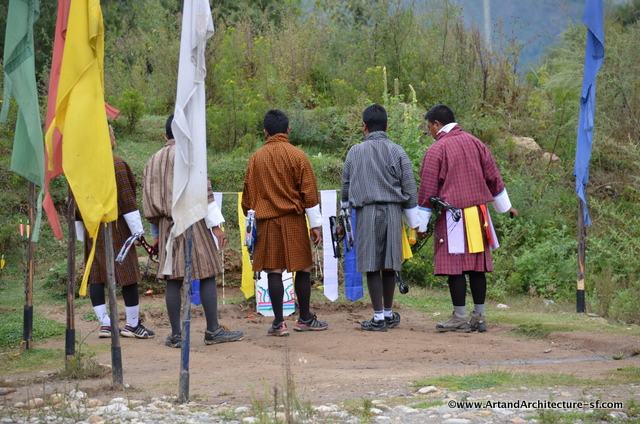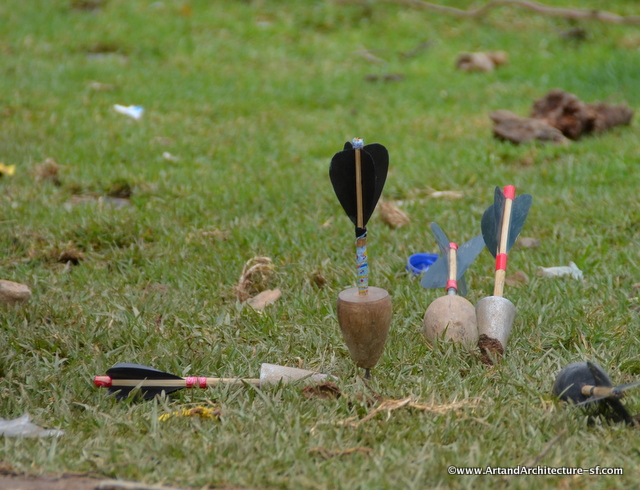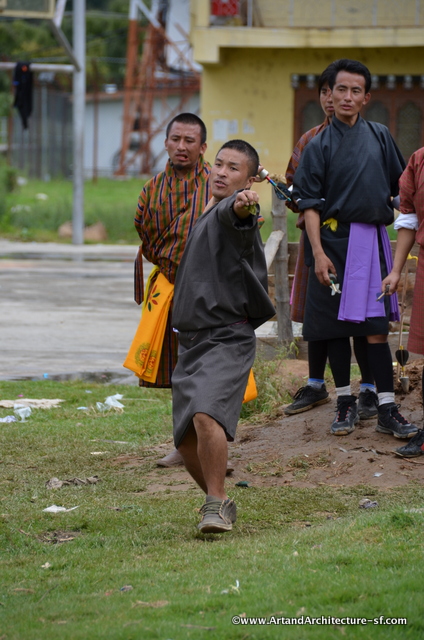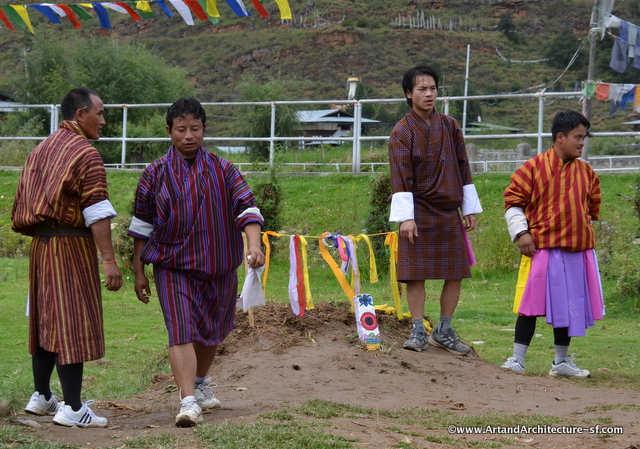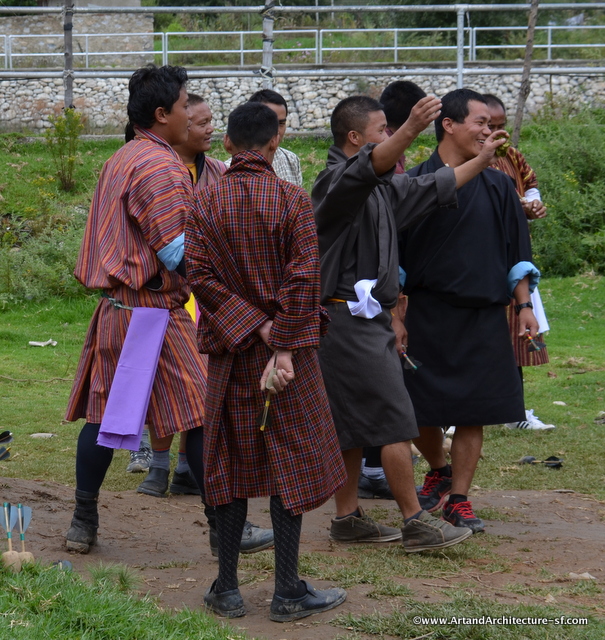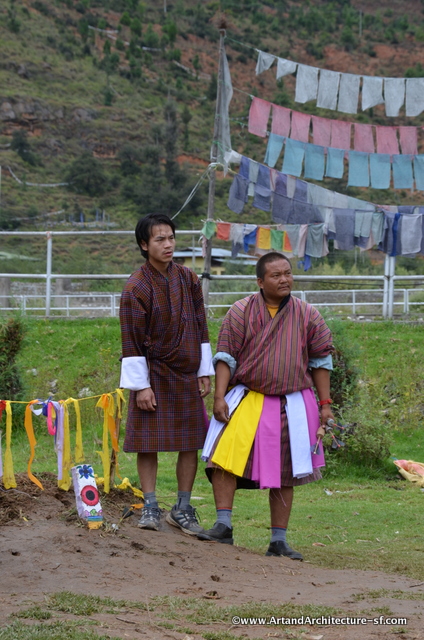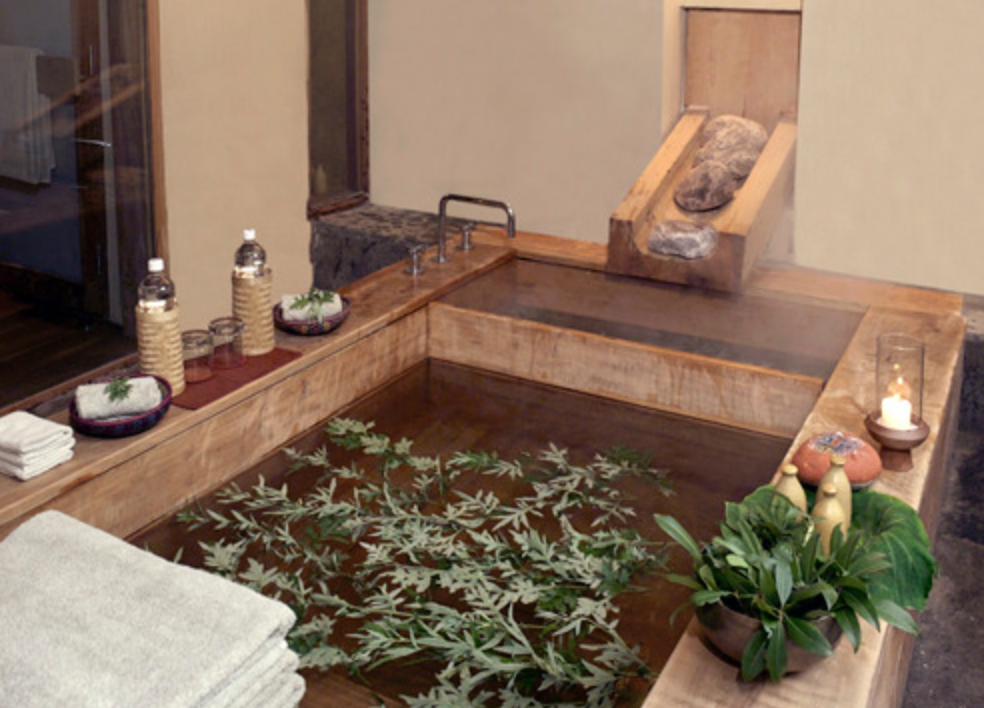September 2015
Archery became the national sport of Bhutan in 1971. Played between two teams, the distance to the target is about 476 feet. The small targets are cut from wood and painted. The targets usually measure about 3 feet tall and 11 inches wide. Bullseyes are called karay. Traditionally, Bhutanese bows are made of bamboo, and arrows from bamboo or reeds, fletched with feather vanes. Arrows may be painted and tipped with metal arrowheads. Quivers may be wooden, with an animal hide covering and a woven strap, however, as you can see from the photo above the expensive compound bow has become de rigueur.
There is much verbal competition as well, it is part of the game to heckle ones opponents, but they also praise each other, and lend each other encouragement. This verbal battle that is waged is called kha shed. Competitors must be prepared to provoke or reply in an equal or more impressive literary fashion. One example is: “Where the vulture flies, my stone shall fly, there to collide.” (Bjagoed phu sa do chap kay). I think you have to speak the idiomatic dialogue to truly appreciate the nuance.
They also celebrate with a happy dance every time a teammate scores.
Khuru, or a form of darts, is fast overtaking archery as a favorite sport. “Khurus” are carved out of hard-wood and there is no restriction on the weight or the size to be played. A “khuru” can weigh anywhere from 5 to 10 ounces.
The distance between the targets is about 100 feet and the target is pretty small too, at about 10 by 5 inches.
They also do a happy dance when their teammates score.
When they score they are given a colored scarf, as you can see this fellow must be one of the better players on the team.
Dotsho or Hot Stone baths seem to be a uniquely Bhutanese concept, practiced in this country for centuries. The Bhutanese believe that the bath helps with joint pains and relaxing. One or more sit in a tub that has a wood grate forming a small pool at one end. Hot steaming river rocks are rolled into the grated end and quickly heat the water to a desired temperature of those in the tub. The person heating the rocks is not within site of the tub, so more heat and rocks are requested by pounding on the wooden chute where the rocks enter the tub.
The tub is filled with Artemsia leaves.

Photo from FrustratedGardner.com
Hot stone baths, even at our 5 star hotel in Paro are very inexpensive, we were three to a tub and the cost was $20/person.
Kuzuzangpo!
